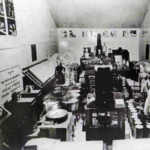The Scale of the Underestimation
Researchers from Aalto University in Finland have revealed that global estimates of human population may be off by a wide margin, mainly due to serious undercounting in rural regions.
Analyzing 307 rural dam resettlement projects across 35 countries between 1975 and 2010, the team found that:
- Rural populations were undercounted by 53% to 84%
- The global population might significantly exceed the current estimate of 8.2 billion
- The worst discrepancies were found in China, Brazil, Australia, Poland, and Colombia
These dam projects offered precise population figures, as compensation requires accurate local counts. When these were compared with five major global datasets, the gaps became clear.
“Even the most reliable 2010 datasets missed up to 77% of rural people.”
How It Happened
The main reason lies in how census data is collected:
- Rural areas are harder to reach and survey
- Census methods are often urban-focused
- Many developing nations lack resources or infrastructure for complete rural enumeration
Global datasets like WorldPop, GRUMP, and LandScan divide land into grids and model populations based on census inputs. But if the base census is flawed, the models inherit those errors.
Even though later datasets from 2015 and 2020 are more advanced, researchers say the same core issues still persist.
Why This Changes Everything
If rural populations are being missed, it affects everything from infrastructure to disaster planning:
- Healthcare facilities and medication supply may not match actual needs
- Transport systems and schools may be planned for the wrong locations
- Disaster risk management could misjudge how many people are in flood or quake-prone areas
Many governments rely on these population maps for big decisions — especially in countries where national data is sparse. This undercount may have caused decades of resource misallocation in rural regions.
Experts Remain Divided
While the study presents a compelling case, some experts remain skeptical:
- They agree rural data needs better collection
- But believe that national and global totals are unlikely to be off by billions
- Critics also note that much of the data comes from Asia, so applying findings globally needs caution
Still, even critics admit the need for new, innovative counting methods, especially in underdeveloped and remote areas.
What Comes Next
The Aalto researchers call for:
- Investment in rural census improvements
- Development of new population modeling techniques
- Reevaluation of historical data used in long-term planning
They stress that while some countries like Finland have accurate digital records, many crisis-hit or developing nations may be decades away from similar systems.
“A flawed picture of rural populations distorts global understanding and fairness.”
















